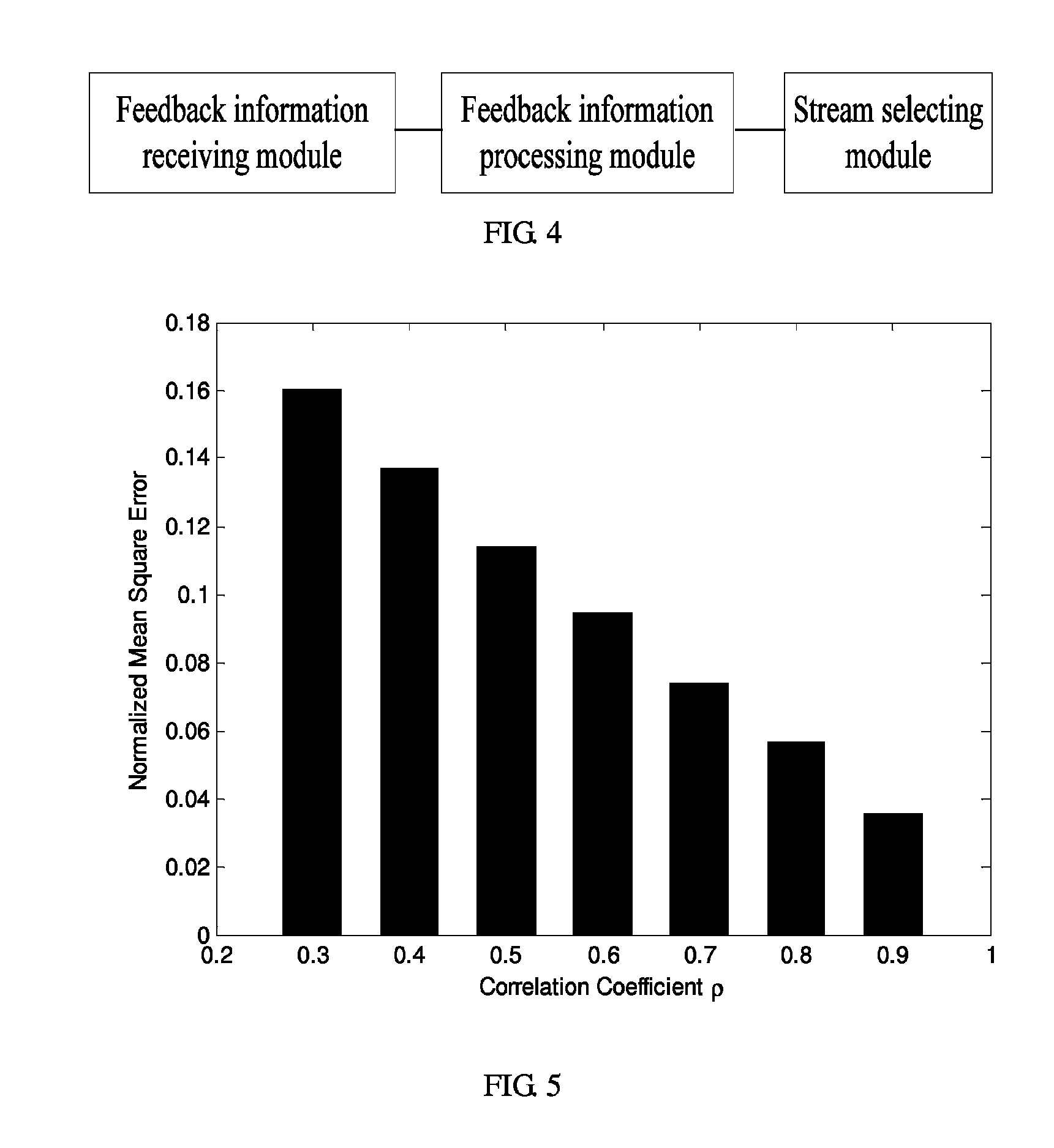Method, system and apparatus for improving throughput performance of space division multiple access system
a technology of space division and multiple access, applied in the field of space division multiple access (sdma) technology, can solve the problems of inability to achieve a solution, and generated overhead too much, so as to improve the throughput performance and improve the effect of an sdma system
- Summary
- Abstract
- Description
- Claims
- Application Information
AI Technical Summary
Benefits of technology
Problems solved by technology
Method used
Image
Examples
Embodiment Construction
[0021]In order to make the technical solutions, objectives and merits of the present invention clearer, the following describes the embodiments of the present invention in more detail with reference to accompanying drawings.
[0022]In order to compensate for performance loss of a limited-feedback SDMA system effectively, the BTS in an embodiment of the present invention selects the number of concurrently sent streams adaptively (namely, adjusts the width of the matrix) at the time of designing the pre-coding and the user scheduling jointly according to feedback information from the UE. The feedback information includes the preferred beam ID of the matrix, information related to a channel vector modulus value, and information about phase difference between a channel vector and the preferred beam of the UE. In an SDMA system, the number of concurrent streams is selected adaptively, namely, through a rank adaptation technology, thus improving the system throughput significantly and appro...
PUM
 Login to View More
Login to View More Abstract
Description
Claims
Application Information
 Login to View More
Login to View More - R&D
- Intellectual Property
- Life Sciences
- Materials
- Tech Scout
- Unparalleled Data Quality
- Higher Quality Content
- 60% Fewer Hallucinations
Browse by: Latest US Patents, China's latest patents, Technical Efficacy Thesaurus, Application Domain, Technology Topic, Popular Technical Reports.
© 2025 PatSnap. All rights reserved.Legal|Privacy policy|Modern Slavery Act Transparency Statement|Sitemap|About US| Contact US: help@patsnap.com



